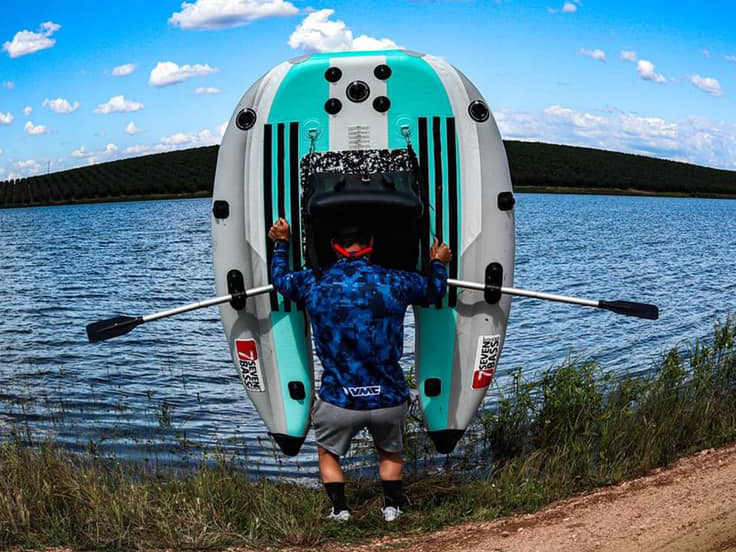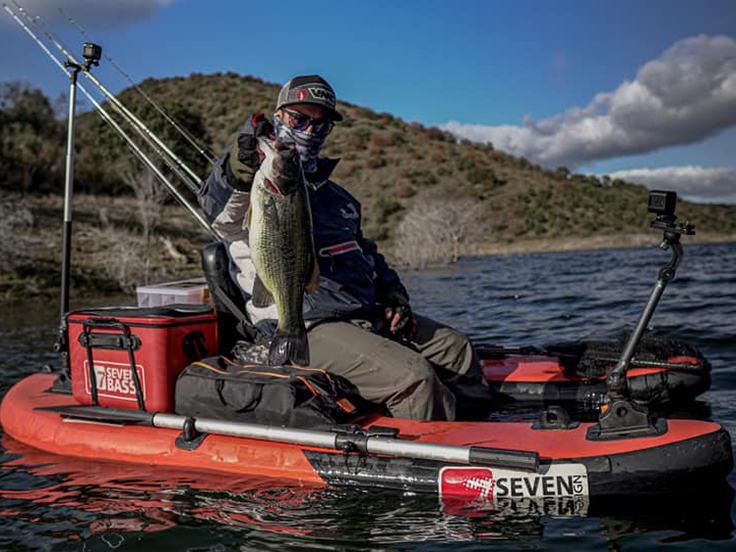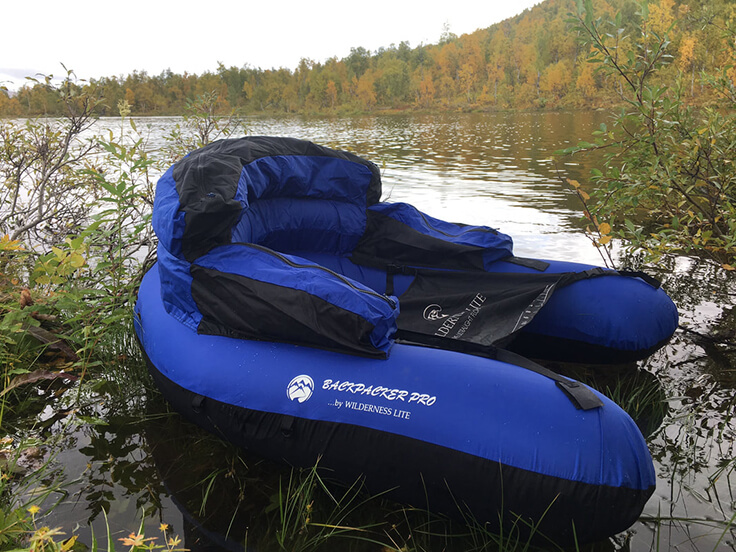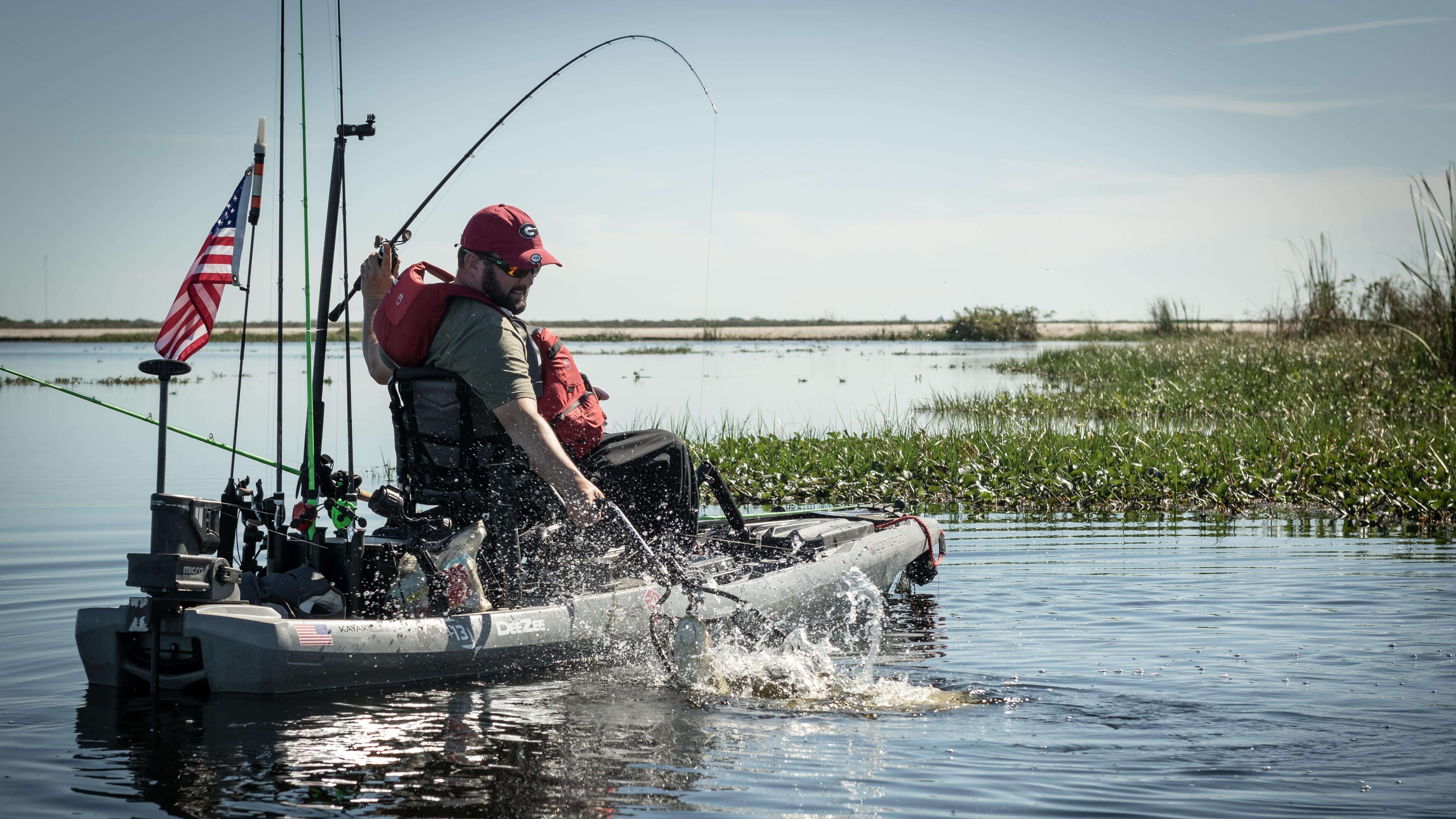
Le float tube is one of the boats leisure activities for fishing. This gives this type of boat of having to comply with very specific regulations. The government has decided on its use and the national fishing federation or those in each département enforce this law. Visit aappma propose a number of alternatives to give greater freedom to the sinner.
First of all, we will explain to you what the obligations and the regulations in terms of equipment. To avoid risking a fine or simply bringing your game of fishing at float tube, you need to be properly equipped.
We will then see that a distinction must be made between private fishing area and those belonging to the public domain. La regulations to fishing may differ from one category to another, requiring a good deal of information to be gathered before exploring a new product lake or a new river.
Finally, we will look at the case of the other navigation systems approaching the float tube. We will see that kayaks or the paddles are not treated in exactly the same way.
What equipment is compulsory on your boat ?

Le lifejacket will be the first thing you need to Equip. Even if the law has not ruled on the matter, the majority of regulations will ask you to do so. It's up to you security. Once you've got it, you won't be able to do without it, and you'll get into the habit of wearing it without question. You never know what might happen to you.
The second point is respect for navigation rules. You may not be familiar with these rules, but they should be familiar to you. You will be sharing the body of water with other users, who are doing their own windsurfing, the boat in moteur or pedalo. Knowing how to behave to fishing is essential. It also ensures a certain amount of peace of mind, particularly when you're on a vnf route sometimes very busy. We recommend that you Equip a specific manual to pass the boating licence.
In a less regulatory and more logical way, remember to always leave with a equipment checked and that won't drop you in the middle of the water. The regulations may not impose this kind of principle, but it's common sense. You wouldn't go jogging in shoes with holes in them or go cycling with a flat tyre.
Rules in the public domain
.jpeg)
The public domain concerns many fishing sectors in France. It includes both water, the rivers or the lakes that belong to one of the government departments. Most of these properties are navigable and are therefore subject to vnf regulations. You'll often have to share the space with a wide variety of leisure activities.
In the public domain, it is important to distinguish between two different categories. The first category, with its limits of trout capture and we'll have the second category where we're looking for pike-perch, , carp or even pike. This classification makes it possible to differentiate between what we might call trout areas and the rest. The opening periods for fishing are therefore different from one category to another in order to respect the natural reproduction cycle of the fish.
The practice of 1st category float tube fishing will not be authorised. All floating devices where the navigation is prohibited. The structure of rivers is relatively fragile and sensitive, so the life there must not be disturbed or disrupted. The rule is therefore clear: no. Only the shoreline or the riverbed will be suitable river for those who practice wading.
The second category will be able to accommodate you without any problem. In fact, it's mainly on this type of lake you'll need to be able to find the right people for the job. Most of the time, you'll need to contact aappma who are responsible for managing a large proportion of these fishing waters. You can fish for all species d'fresh water as the pike, the pike-perch, the pole, carp, blackbass or even catfish for the more adventurous among you.
For a typical lake, the rules are fairly straightforward and require no special adaptation. However, we advise you to contact theaappma who will be in the best position to give you reliable information on local regulations. In particular, it will be important to find out whether you can stray from the shore without running the risk of breaking the law. Think about Be visible, you can share browsing space, which can sometimes be dangerous.
It is also possible that a local regulation or a prefectoral decree may govern certain fishing zones or capture. Putting you at the water with your float tube generally in different locations from the boats, you may miss the information displayed in these strategic locations. In good sinner, it would be reprehensible to attempt to glean this information beforehand.
If you practice on rivers or rivers in the public domain, then the regulations can be more fussy. The navigation is much more organised. You'll need to learn about bridges, upstream and downstream, and understand how the boundaries around buildings work. In fact, you can rely on specific rules for dams, fish passes, etc fish.
You will need to comply with a number of rules laid down by law, in particular division 240. Visit sinner must maintain a position on the fascia strip without straying too far from it. It is strictly forbidden to browse in the middle of the bollards of the channel, nor to cross it. The practice on any night run, it is strictly forbidden to drive in high water or heavy fog.
Finally, you need to behave in a certain way when faced with these kinds of dangers. You must not secure at any bridge, whether upstream or downstream. You should keep your distance from dams and look out for signs indicating their presence. The websites of each federation or aappma should make it possible to retrieve this information without worrying about the date of publication or the reality of the routes reserved.
Rules in the private sector

In the end, they are quite different from those that can be found in the public domain. As they are not subject to a code or law, you will regularly have more opportunities to use them freedom on this type of lake and very rarely rivers. However, you can rely on private regulations as far as navigation is concerned, but the law fishing in most cases, this still applies, whether in terms of No Kill or catch limits for species such as trout or crayfish.
It will be important to get in touch with the manager of this stretch of water. This could once again be a aappma, you may be a private owner or even a local authority such as a town hall. Rules and regulations are available on request or can be consulted on the owner's website.
While you have complete freedom, you must still follow a few simple rules, including the following wearing a waistcoat, we've got a lot of things to worry about, from picking up all the rubbish once we're on the shore to sharing the space.
Other boats

If one day you decide to change your equipment to make it more mobile, you'll need to double-check all these points rules. Indeed, a kayak or a paddle are not always treated in the same way in the eyes of the law.
For example, a kayak will have to be registered in order to be able to navigate in certain sectors. This means that you will need to be equipped with equipment safety which can weight to very high fines if it is missing.
The best advice from sinner that we can give you and always contact the owners or public managers before taking on a new project fishing sector.
You might like :
- How do I choose my Float Tube ?
- Which electric motor for a float tube ?
- Which rod for Float Tube fishing ?
- Which float tube is right for you ?
- Which waders for float tubes ?
- Which sounder for a float tube ?
- 7 accessories for your Float Tube
- Float tube or kayak: how do you choose ?
- How to start Float Tubing: equipment, spots, techniques
- How do I inflate a float tube ?
- How do you install a fish finder on a float tube ?
- How do I repair a float tube bladder ?
- Which fins should you choose for Float Tube fishing ?
- How do you move forward and steer a float tube ?
- Float tube storage and maintenance: Complete guide
- Which float tube is right for catfish fishing ?
